Guided visualization practices significantly enhance focus and relaxation by promoting mental clarity and reducing stress. These techniques utilize personalized imagery and tailored approaches to engage the mind deeply. Challenges such as maintaining focus and managing distractions are common, but solutions exist. This article explores the unique attributes of guided visualization, its adaptability for various audiences, and practical integration into daily routines for optimal benefits.
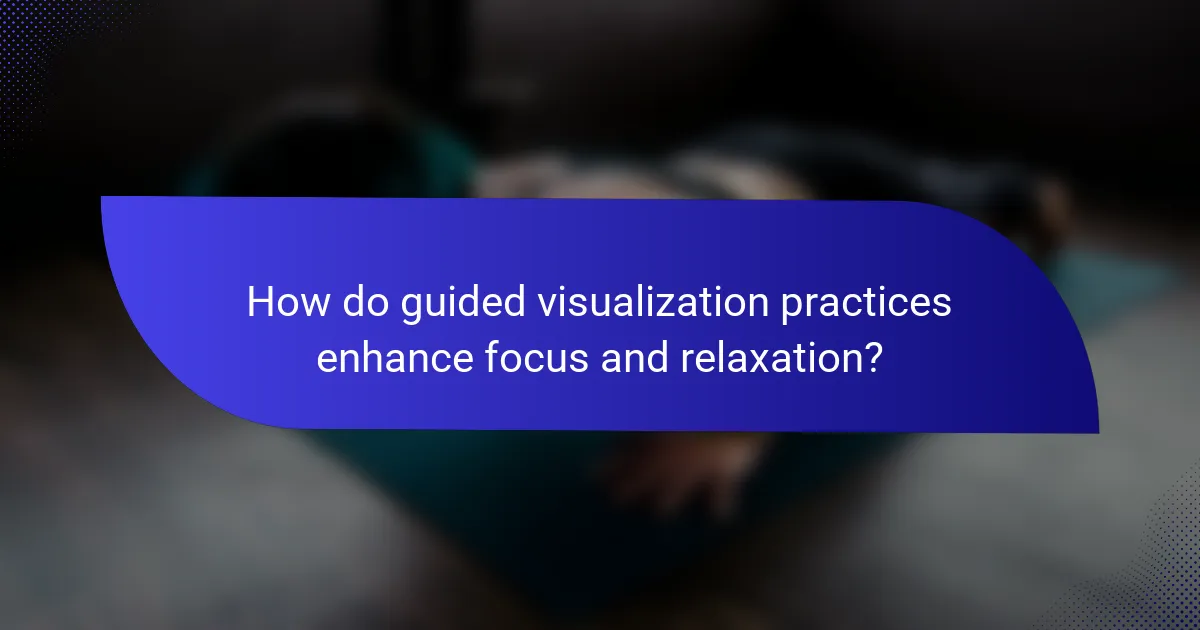
How do guided visualization practices enhance focus and relaxation?
Guided visualization practices enhance focus and relaxation by promoting mental clarity and reducing stress. These techniques involve visualizing calming scenes or desired outcomes, which can lead to improved concentration and a sense of tranquility. Research indicates that regular engagement in guided visualization can lower anxiety levels and enhance cognitive performance. By fostering a deep state of relaxation, individuals can better manage distractions and maintain focus on their tasks.
What are the psychological benefits of guided visualization?
Guided visualization enhances psychological well-being by reducing stress and improving focus. This practice promotes relaxation, leading to decreased anxiety levels and increased emotional resilience. Regular engagement can enhance creativity and problem-solving skills, fostering a positive mindset. Research indicates that participants often experience improved mood and overall mental clarity after sessions.
Which techniques are most effective for improving concentration?
Guided visualization practices are effective techniques for improving concentration. These methods enhance focus by engaging the mind in structured imagery, promoting relaxation and mental clarity.
One effective technique is progressive muscle relaxation combined with visualization. This practice reduces physical tension while guiding the mind to visualize a calm environment. Another method is goal-oriented visualization, where individuals mentally rehearse tasks or objectives, reinforcing focus and confidence.
Research shows that regular practice of guided visualization can lead to increased attention span and reduced distractions. Participants often report heightened awareness and improved performance in tasks requiring concentration.
Incorporating these practices into daily routines can foster a more focused and relaxed mindset, ultimately enhancing overall productivity.
How does guided visualization differ from other relaxation methods?
Guided visualization differs from other relaxation methods by focusing on mental imagery to enhance relaxation and concentration. Unlike techniques such as deep breathing or progressive muscle relaxation, guided visualization actively engages the mind’s creative faculties. This method allows individuals to create vivid mental images that promote a sense of calm and focus. Guided visualization can lead to deeper relaxation and improved mental clarity through immersive experiences, making it a unique tool for stress relief.
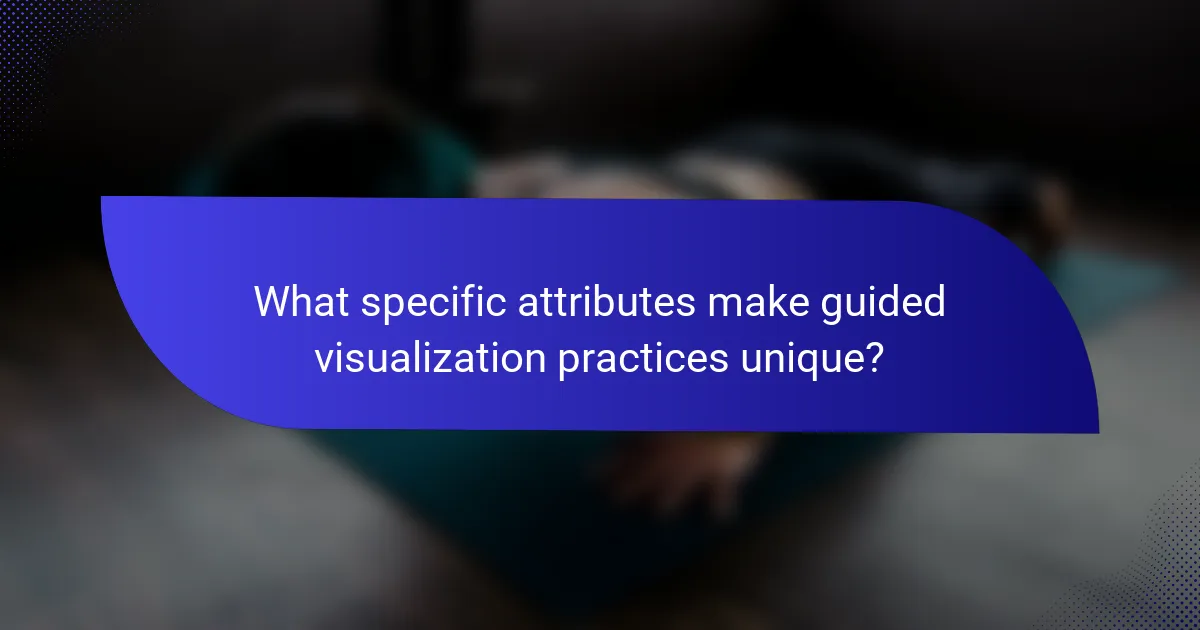
What specific attributes make guided visualization practices unique?
Guided visualization practices are unique due to their tailored approach, immersive techniques, and multi-sensory engagement. These practices enhance focus and relaxation by incorporating personalized imagery, guided narration, and specific breathing techniques. Unique attributes include the ability to adapt to individual needs, facilitating deeper mental states and emotional release. Additionally, they often utilize rare elements like soundscapes or aromatherapy to enrich the experience, making them distinct in promoting mindfulness and well-being.
How does personal intent influence the effectiveness of visualization?
Personal intent significantly enhances the effectiveness of visualization by aligning mental focus with desired outcomes. When individuals approach guided visualization with clear intentions, they engage more deeply in the practice, leading to improved concentration and relaxation. Intent shapes the imagery used, making it more vivid and relevant, which can amplify emotional and physiological responses. This unique attribute of personalized visualization fosters a stronger connection between the mind and body, enhancing overall effectiveness.
Which sensory modalities are most commonly engaged in guided visualization?
Guided visualization commonly engages visual, auditory, and kinesthetic sensory modalities. Visual imagery enhances focus through mental pictures, while auditory elements like soothing music promote relaxation. Kinesthetic sensations deepen the experience by invoking physical feelings associated with the visualization.
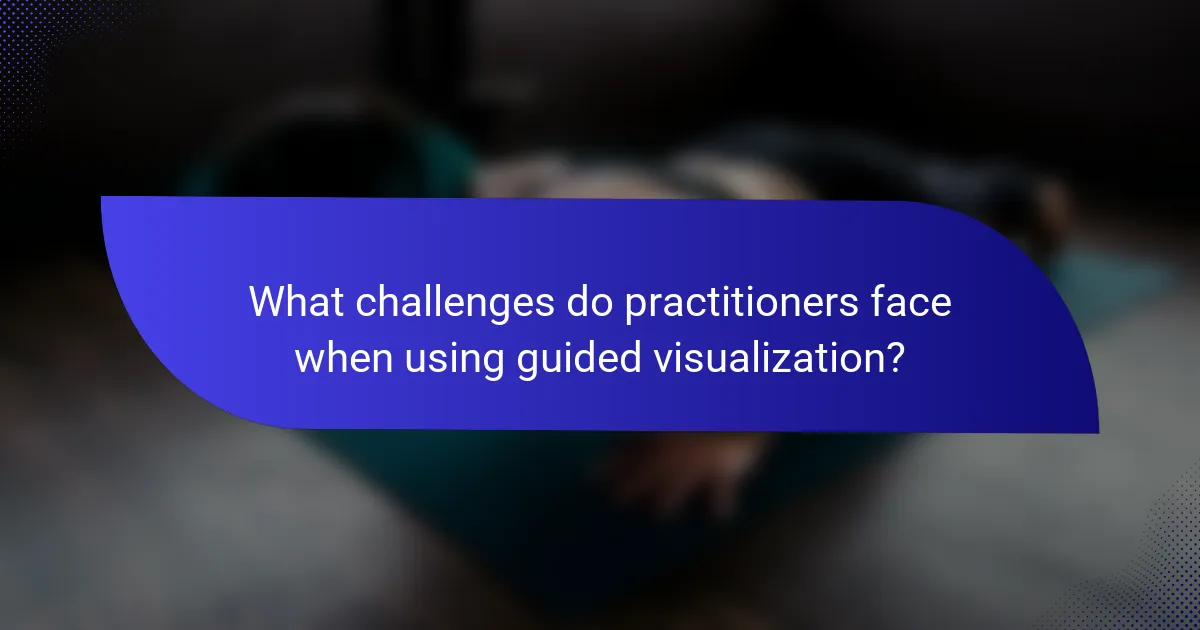
What challenges do practitioners face when using guided visualization?
Practitioners face several challenges when using guided visualization, including difficulty maintaining focus, managing distractions, and overcoming skepticism. These obstacles can hinder the effectiveness of visualization techniques. Additionally, some individuals may struggle to visualize clearly, impacting their ability to engage fully in the practice.
How can distractions impact the effectiveness of visualization sessions?
Distractions significantly reduce the effectiveness of visualization sessions. They disrupt focus, leading to incomplete mental imagery and diminished relaxation benefits. Effective visualization requires a calm environment to enhance concentration and achieve desired outcomes. Reducing external stimuli can improve the quality of these practices.
What common misconceptions exist about guided visualization?
Common misconceptions about guided visualization include beliefs that it is merely daydreaming, it requires a specific talent, or it is ineffective without a trained facilitator. Many think it cannot produce tangible results, overlooking its documented benefits for focus and relaxation. Additionally, some assume it is only for stress relief, while it can enhance creativity and problem-solving skills.
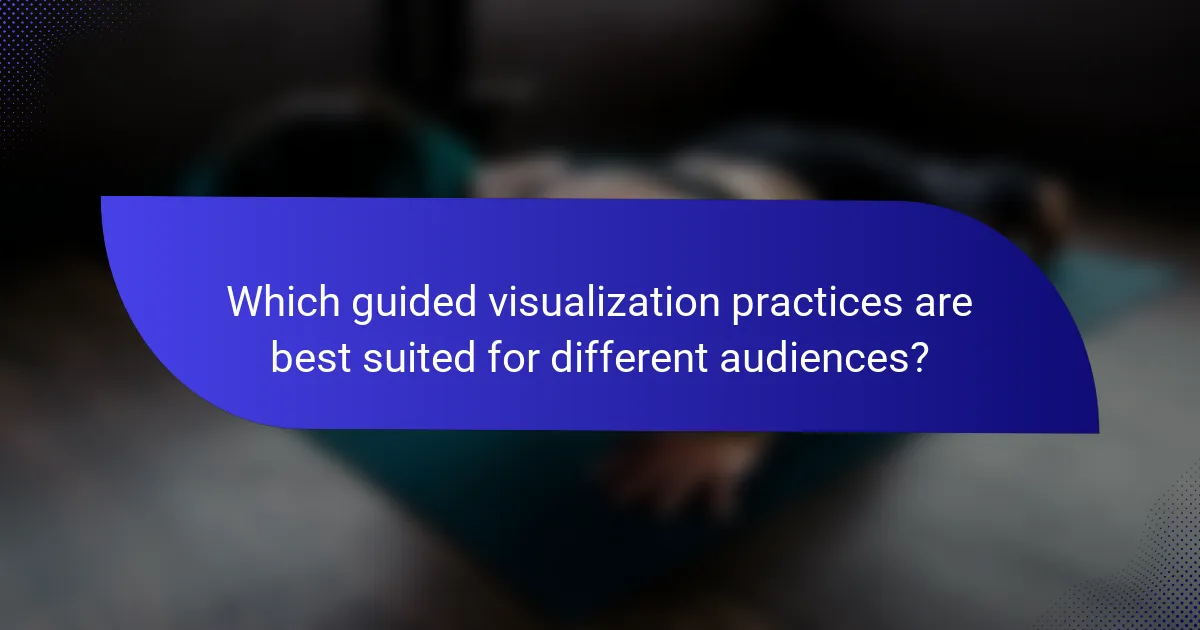
Which guided visualization practices are best suited for different audiences?
Guided visualization practices vary based on audience needs. Mindfulness visualizations suit beginners seeking relaxation, while goal-oriented techniques benefit professionals aiming for focus. Children respond well to imaginative imagery, fostering creativity. Seniors may prefer simple, calming visuals to enhance well-being. Group sessions can leverage collective energy, enhancing engagement. Tailoring practices ensures effectiveness across diverse demographics.
How can beginners get started with guided visualization?
To start with guided visualization, beginners should follow structured steps to enhance focus and relaxation. First, find a quiet space free from distractions. Next, choose a guided visualization resource, such as an audio recording or app. Set a comfortable position and close your eyes. Focus on your breathing, inhaling deeply and exhaling slowly. Visualize a peaceful scene, allowing your mind to immerse in the details. Practice regularly to improve your skills and deepen relaxation.
What advanced techniques can experienced practitioners explore?
Experienced practitioners can explore advanced guided visualization techniques such as sensory immersion, dynamic imagery, and intention setting. Sensory immersion enhances focus by engaging multiple senses, creating a vivid mental experience. Dynamic imagery involves shifting scenes or scenarios to maintain engagement and adaptability. Intention setting aligns visualizations with specific goals, enhancing their effectiveness. These techniques deepen relaxation while improving overall focus.
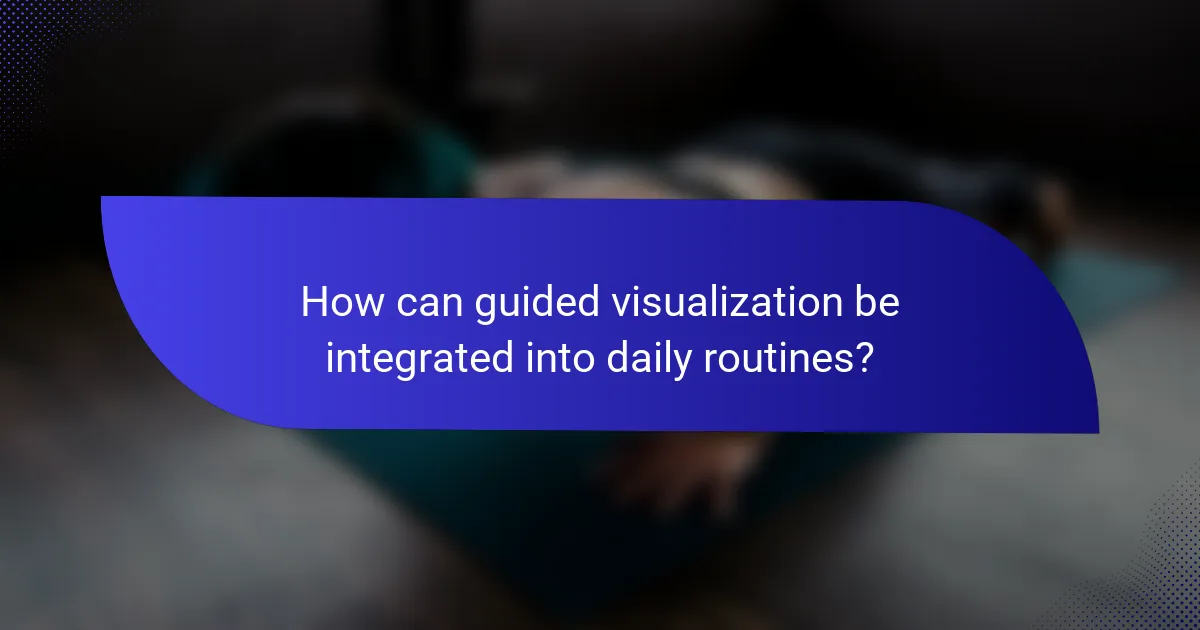
How can guided visualization be integrated into daily routines?
Guided visualization can be seamlessly integrated into daily routines by dedicating specific time slots for practice. Start with five to ten minutes in the morning or before bed to enhance focus and relaxation. Use guided audio or video sessions to facilitate the experience. Incorporate visualization techniques during breaks to recharge throughout the day. This method can improve mental clarity and reduce stress.
What are the best times of day to practice guided visualization for optimal results?
The best times of day to practice guided visualization for optimal results are early morning and late evening. Early morning sessions enhance focus and set a positive tone for the day. Late evening practices promote relaxation and prepare the mind for restful sleep. Both times align with natural circadian rhythms, maximizing effectiveness.
Which environments are most conducive to effective visualization sessions?
Quiet, comfortable spaces with minimal distractions are most conducive to effective visualization sessions. Natural light and soothing colors enhance focus and relaxation. Incorporating nature elements, like plants or water features, can further improve the experience. Additionally, a consistent routine and familiar environment can deepen the effectiveness of guided visualization practices.
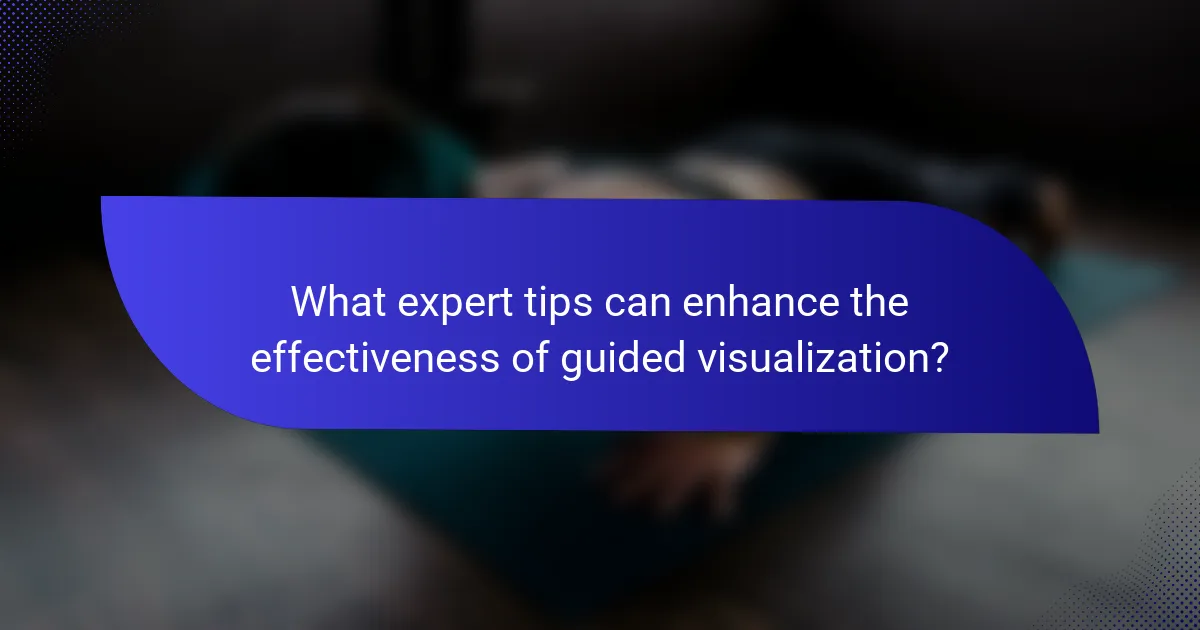
What expert tips can enhance the effectiveness of guided visualization?
To enhance the effectiveness of guided visualization, focus on clarity, intention, and practice. First, set a clear intention for your visualization session to guide your thoughts. Second, create a serene environment free from distractions to deepen relaxation. Third, practice regularly to strengthen your visualization skills. Finally, use sensory details to make the experience vivid, engaging more senses for a powerful impact.
How can individuals tailor visualization practices to their personal needs?
Individuals can tailor visualization practices by identifying personal goals and preferences. Customizing imagery, duration, and setting enhances focus and relaxation.
Start by defining specific outcomes, such as stress reduction or improved concentration. Choose imagery that resonates emotionally, whether serene landscapes or personal achievements. Adjust the duration of sessions to fit your schedule, ranging from a few minutes to an hour. Select a quiet, comfortable environment that minimizes distractions.
Experiment with different techniques, such as guided audio or self-directed sessions, to discover what works best. Regular practice fosters a deeper connection to the visualization process, leading to more significant benefits over time.
What common mistakes should be avoided in guided visualization?
Common mistakes to avoid in guided visualization include lack of clarity, unrealistic expectations, and distractions. Clear intentions enhance focus, while setting achievable goals fosters relaxation. Additionally, minimizing interruptions during practice is crucial for effectiveness.
Which resources offer the best guided visualization experiences?
Resources that offer the best guided visualization experiences include apps, online courses, and audio recordings. Popular apps like Headspace and Calm provide structured sessions for focus and relaxation. Websites such as Insight Timer offer a wide range of free guided meditations. Additionally, platforms like Udemy feature courses that teach visualization techniques. Podcasts focused on mindfulness often include guided sessions as well. Lastly, YouTube channels dedicated to meditation provide various visualization experiences for different needs.